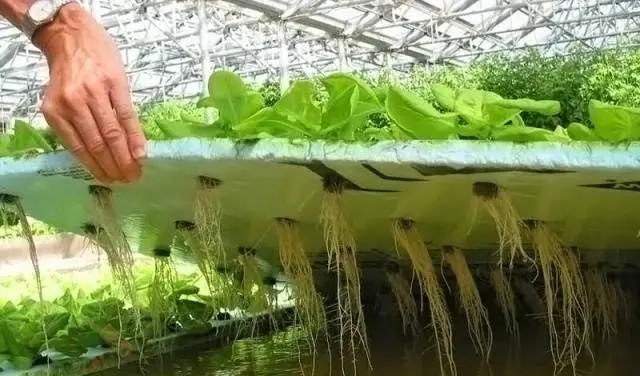Contents
With the proper organization of the growing process, homemade strawberries are able to produce crops all year round. Plants require certain lighting, temperature, humidity, moisture and nutrients.
Growing methods
For growing strawberries, you can choose the traditional method when plants are planted in containers. Modern technologies allow growing in special bags or using nutrient mixtures.
Planting in pots
The easiest way to grow strawberries is to plant them in containers. For planting plants, pots with a volume of 3 liters or more will be required. If a long container is used, then several seedlings can be planted in a row at a distance of 20 cm. The containers must have holes for water to drain.
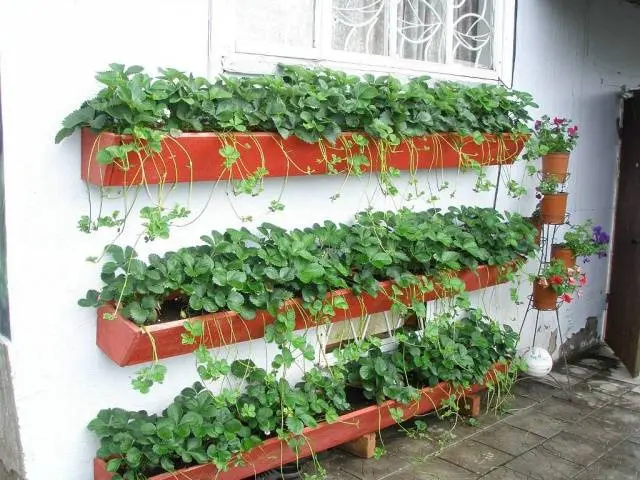
Containers with strawberries are placed horizontally or vertically. If you hang the containers vertically, you can significantly save free space.
Growing in bags
For growing strawberries, you can buy ready-made bags or make them yourself. This will require bags of sugar or flour. Tanks choose high and small diameter. The use of bags ensures year-round cultivation of strawberries.
After filling the bag with soil, cuts are made in them for planting strawberries. Leave a distance of 20 cm between plants. Bags with seedlings are placed on racks or hung vertically.
The option of using the bag is shown in the photo:

Using hydroponics
Growing strawberries hydroponically does not involve the use of soil. Plants receive nutrients from special solutions that are prepared for watering. The method does not require large expenditures and is highly effective.
Hydroponic cultivation has the following varieties:
- Planting strawberries in a substrate made of mineral wool, peat or coconut. The substrate is placed in a film and placed on a pallet, on which excess nutrient mixture is collected.
- The use of a nutrient layer. Plants are planted in glasses with holes. Under the containers organize the supply of the nutrient mixture. When the strawberry roots grow to the nutrient layer, the plant will receive the necessary substances.

- The use of the aquatic environment. A strawberry bush is placed on a foam plastic located above a container with a nutrient mixture. Due to excess moisture, this method of hydroponics at home is considered not the most successful.
- Aeroponics. Strawberry roots are placed in a mist generated by a special device. As a result, plants absorb nutrients better.
Choice of varieties
For home cultivation, remontant or ampelous strawberry varieties are chosen, which are unpretentious in care. Remontant varieties with quality care are able to bear fruit all year round with a break of several weeks.
Since the plant is under heavy stress, it may die after harvesting. Therefore, it is better to plant several varieties so that the berries ripen all year round.
Ampel strawberries produce one crop per season. The plant produces many hanging shoots that can bloom and bear fruit without rooting.
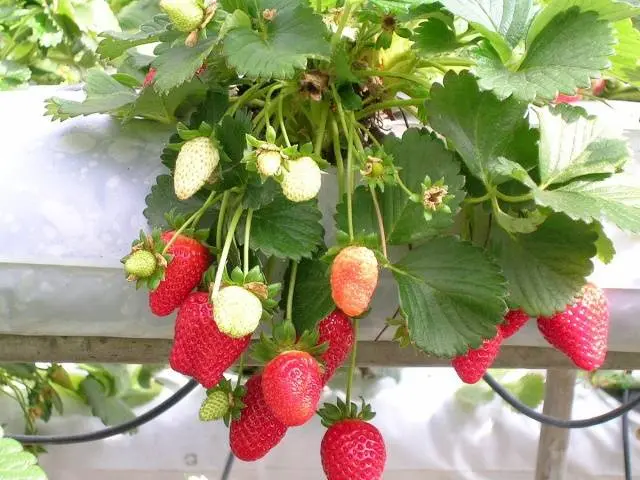
The most suitable are the following varieties:
- Everest is a French variety that produces large and medium-sized berries with sweet and sour pulp.
- Cardinal is a disease-resistant dessert strawberry. The variety is characterized by spindle-shaped fruits, dessert taste.
- Elizabeth II is one of the most popular varieties, producing large berries with a sweet taste.
- Albion is an oblong-shaped strawberry with good taste. From one bush you can get up to 2 kg of crop.
- Temptation is an early ripe variety, which is distinguished by large fruits. The plant brings a good harvest and has a dessert taste.
- Merlan is an ampelous variety that gives pink inflorescences. Berries are formed small, but in large quantities. The taste of the fruit is sweet and rich.
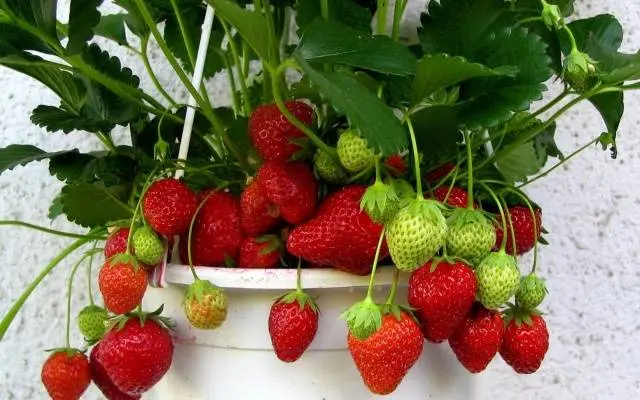
Seedlings can be purchased at specialized stores. Plants are purchased only from trusted manufacturers. Diseases and plant pests spread with poor-quality seedlings.
Seedlings can be taken from their summer cottage. Breeding strawberries is done by mustache or by dividing the bush. For remontant plants, the method of dividing the rhizome is used.
Preparing for planting
For planting, you can use store-bought soil for growing vegetables or flowers. If the soil is prepared independently, then an equal amount of earth, sand and humus will be required. Strawberries prefer light soils, chernozem, loamy or sandy loam.
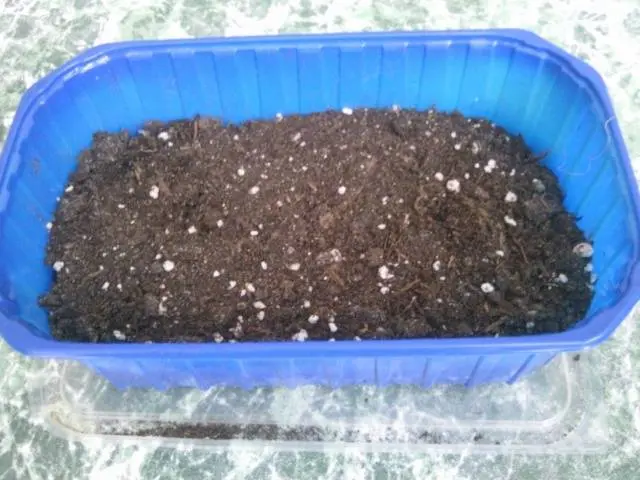
If the soil contains an increased amount of sand, then you can add a little peat when planting. The use of coarse sand will help improve the properties of clay soil. All operations regarding soil preparation for indoor strawberries are carried out a week before planting.
The container is filled by a third with a drainage layer (pebbles, expanded clay, crushed brick), then covered with earth. After planting, the plants are watered.
Care instructions
To grow strawberries at home, you need to follow the rules for caring for it. This includes lighting equipment, timely watering and fertilization. Additionally, you need to control the level of humidity and temperature in the room, especially in winter.

Lighting organization
To grow strawberries indoors, you need to provide the plants with the necessary lighting. The taste of the berries and the time of their ripening depend on this. For the organization of lighting, fluorescent lamps will be required to provide a level of illumination close to natural.
At home, LED lamps with a power of up to 50 watts are used. Strawberry plantings should be covered for 14-16 hours. Lamps are placed in lamps and covered with foil. Thus, a uniform distribution of light for plants is ensured.
It is allowed to use other types of lamps:
- fluorescent (2 lamps of warm light need one lamp of cold light);
- sodium;
- metal halide.
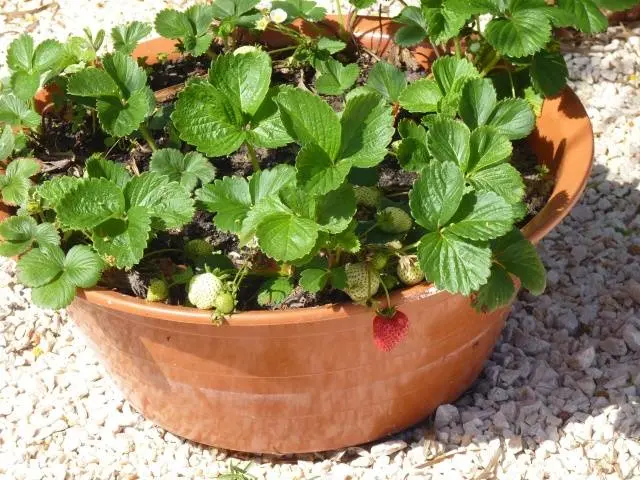
To increase the level of illumination, in the room where the plants are located, the walls are whitewashed, mirrors or aluminum foil are hung.
If strawberry plantings are on the balcony, then the plants need additional lighting. At the end of the day, the lamps are turned on for a certain time so that the total duration of illumination is 14 hours.
If the daylight hours for strawberries are 16 hours, then it will take a week and a half to bloom. The first harvest from plants is obtained in a month.
Humidity and temperature
The room should maintain a certain level of humidity – about 75%. If strawberries are grown in a residential area, then the humidity level can be increased by installing water containers or periodically spraying. It is possible to reduce this figure by airing the room with plants.
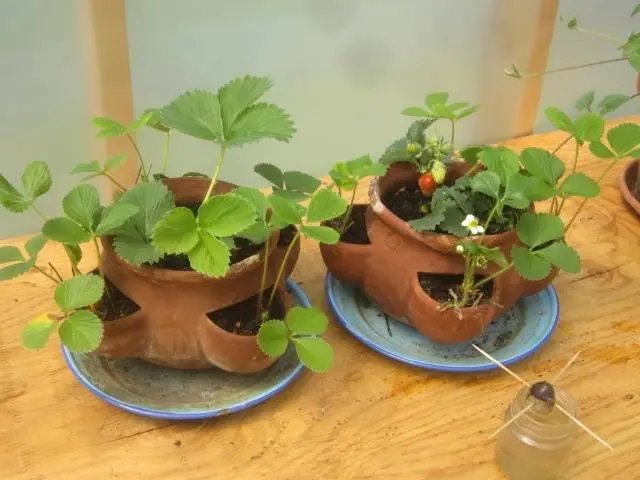
Strawberries begin to develop only after establishing a stable temperature in the range of 18-24 degrees. If the room does not warm up well, especially in winter, then you need to equip additional heating.
Watering order
Strawberries prefer moderate watering. With a lack of moisture, the plants dry out, develop slowly, form small fruits. Excess moisture negatively affects the taste properties of berries, which become more watery.
The organization of watering depends on the method of planting. If growing strawberries at home is done vertically, then drip irrigation is required. Water containers are placed above the level with a pot of strawberries, after which thin tubes are installed from them. Holes are made along the length of the tubes, due to which watering is carried out.

The advantage of drip irrigation is the uniform distribution of moisture. This method is economical and allows you to control the flow of water.
Small planting areas can be watered manually. Be sure to use warm water, which the plants are watered under the root. The procedure is carried out in the morning or evening.
Fertilization and pollination
Strawberries at home receive less nutrients than when grown outdoors. Therefore, fertilization is an obligatory step in the care of plantings.
Strawberries are fed once every two weeks. Especially high is the need of plants for nutrients during flowering and the end of fruiting. Organic fertilizers (bird droppings, mullein, humates) or special mineral complexes are selected for top dressing.
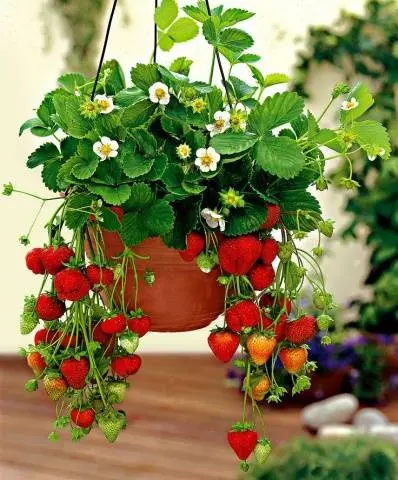
Growing strawberries at home all year round involves pollination of plants. If the variety is not self-pollinating, then the procedure is carried out manually. To do this, use an ordinary brush or direct the air flow from the fan to the landings.
Conclusion
There are many ways to grow strawberries at home. Be sure to select unpretentious varieties that can produce a crop in any conditions. To obtain a crop, plants are irrigated, lit and fertilized.
How to grow strawberries at home is described in the video:










